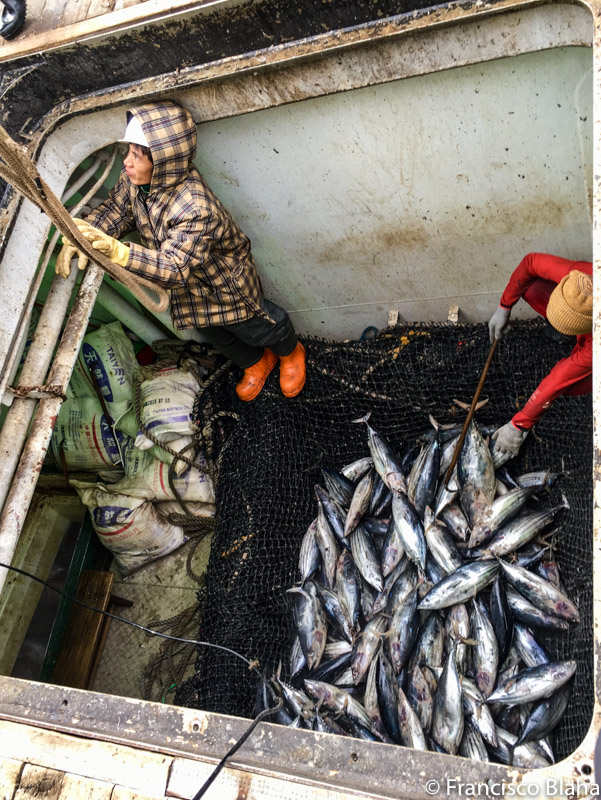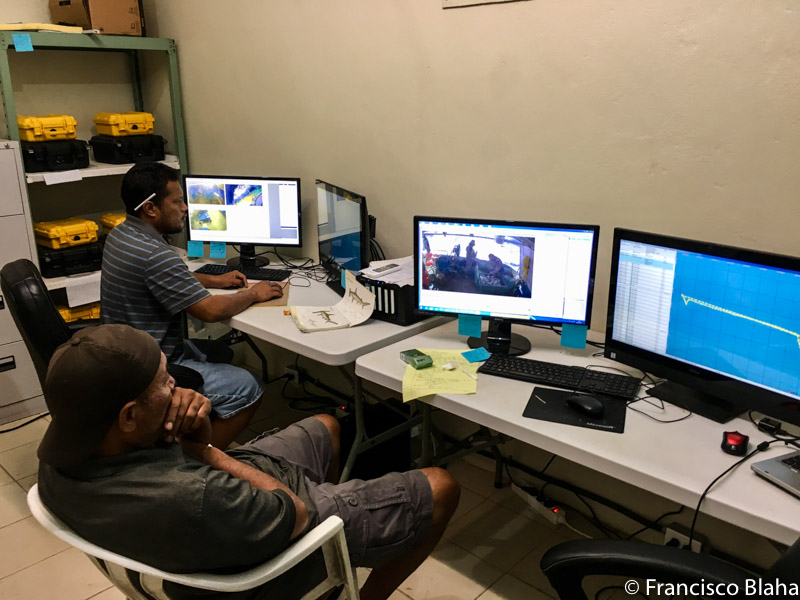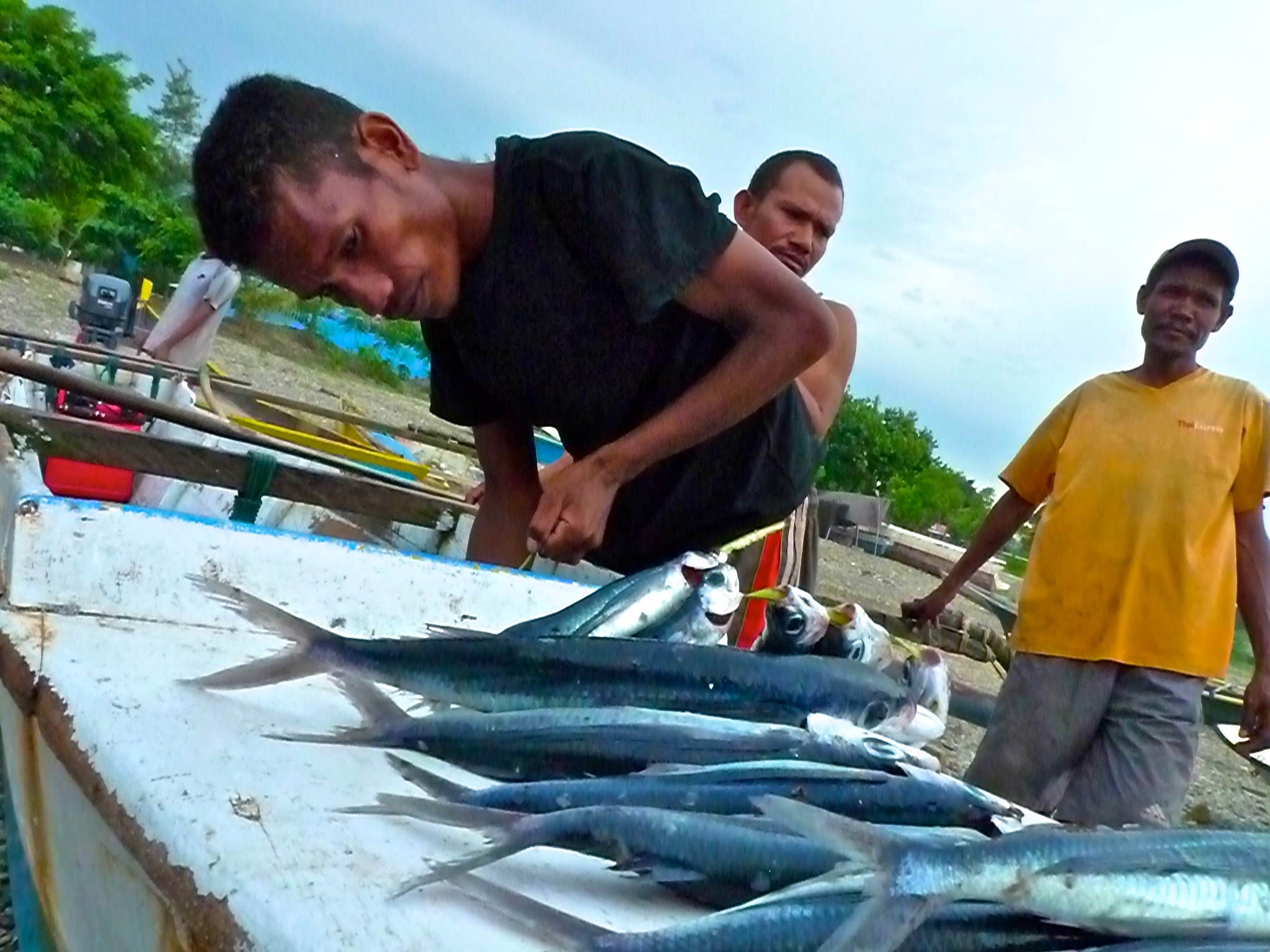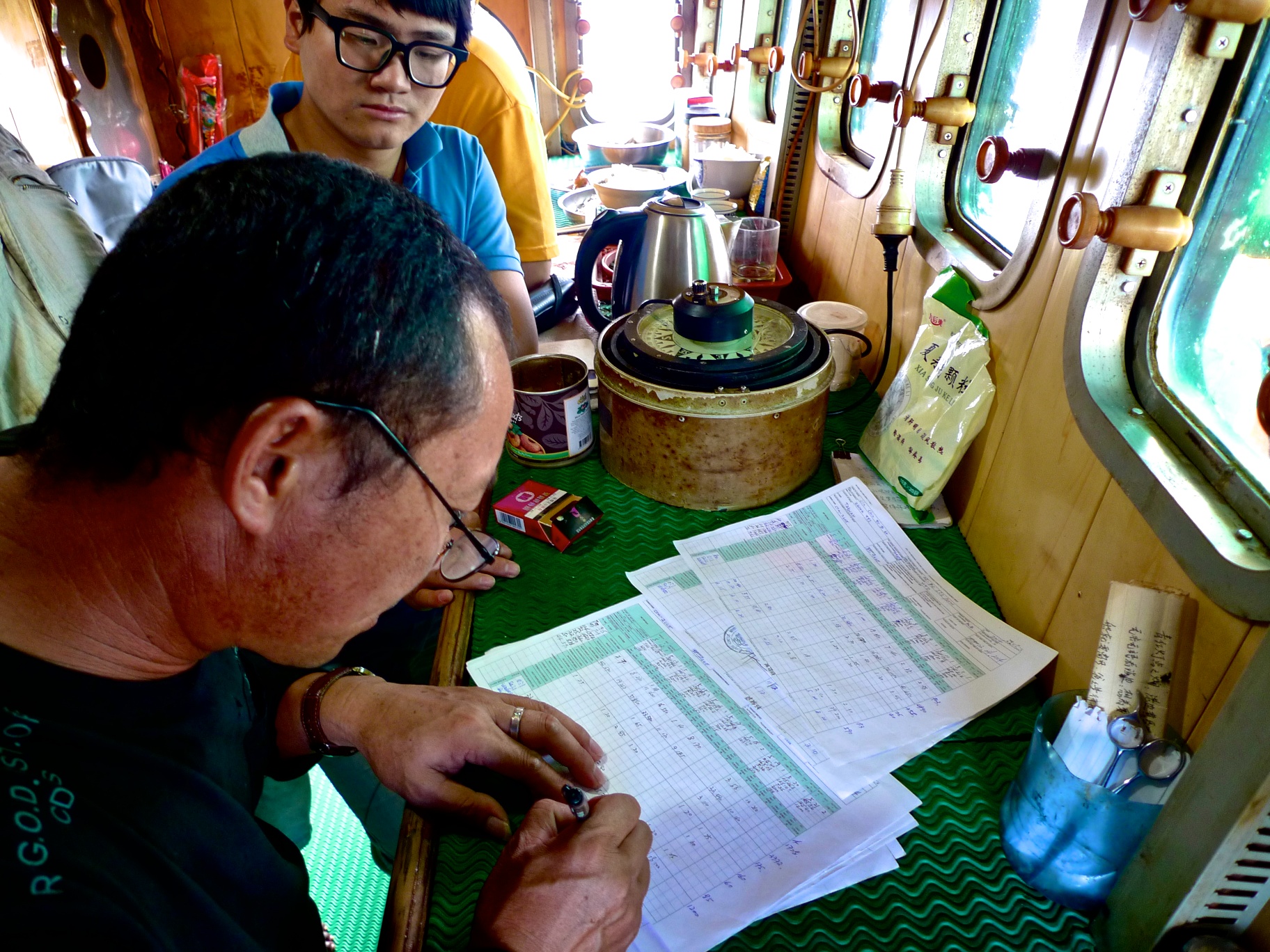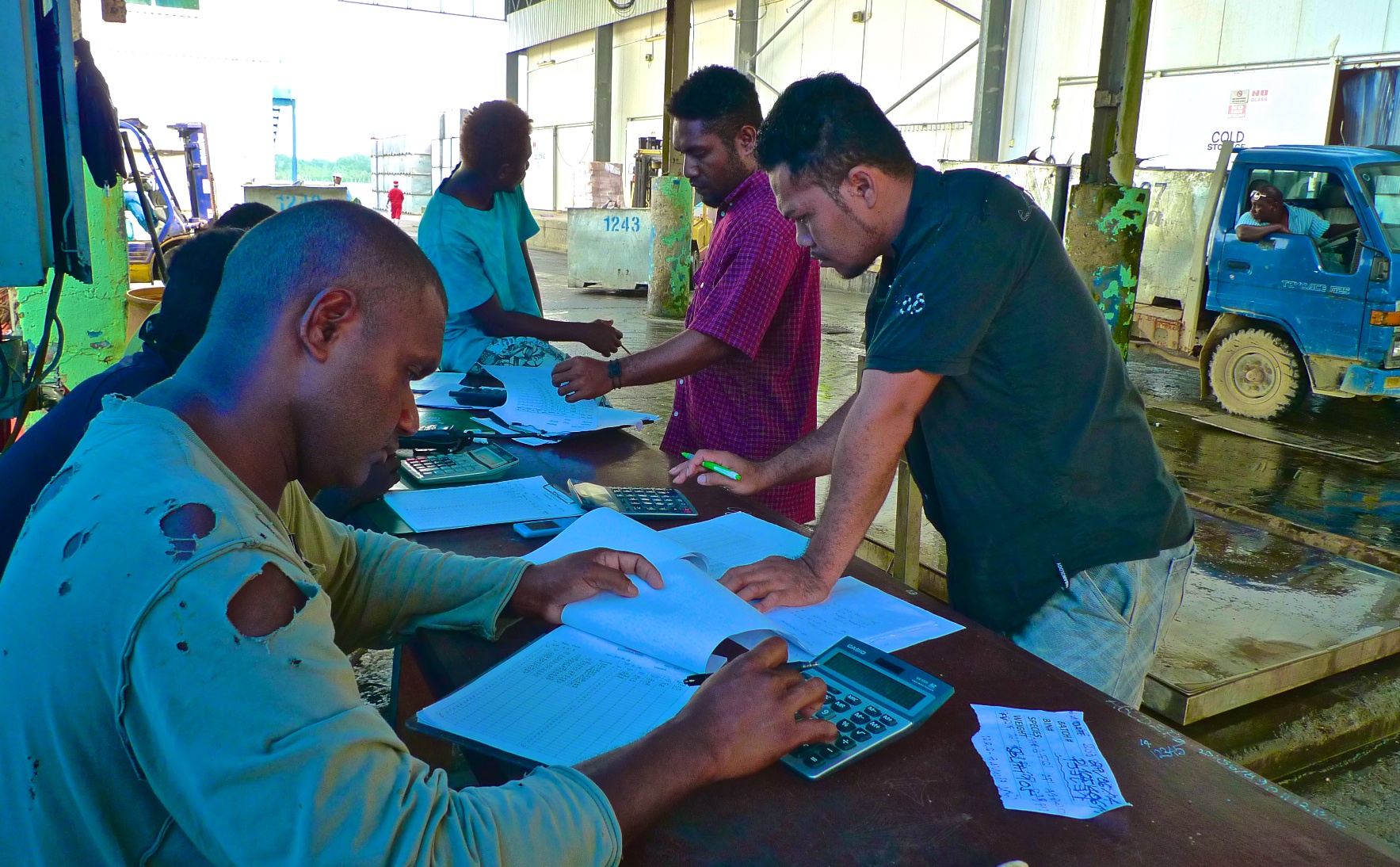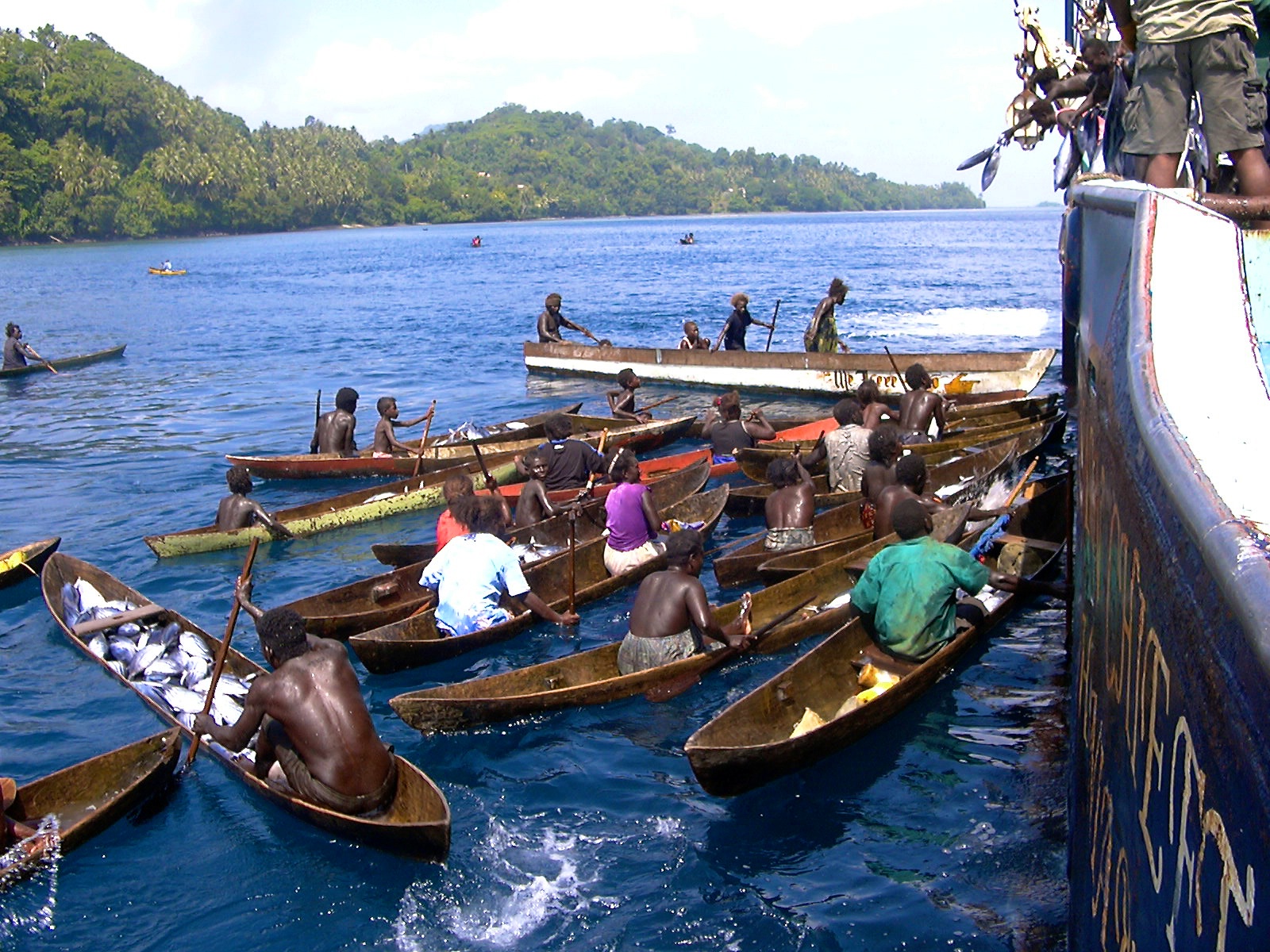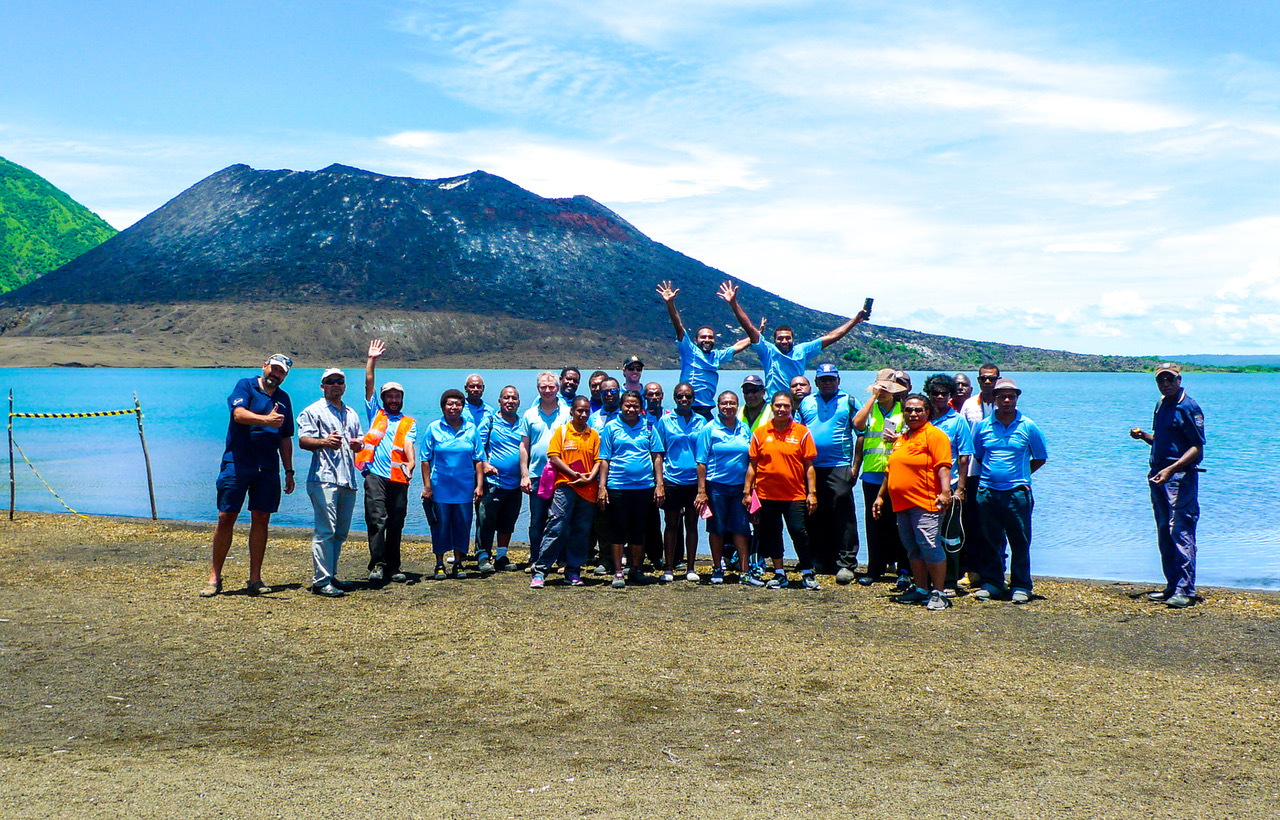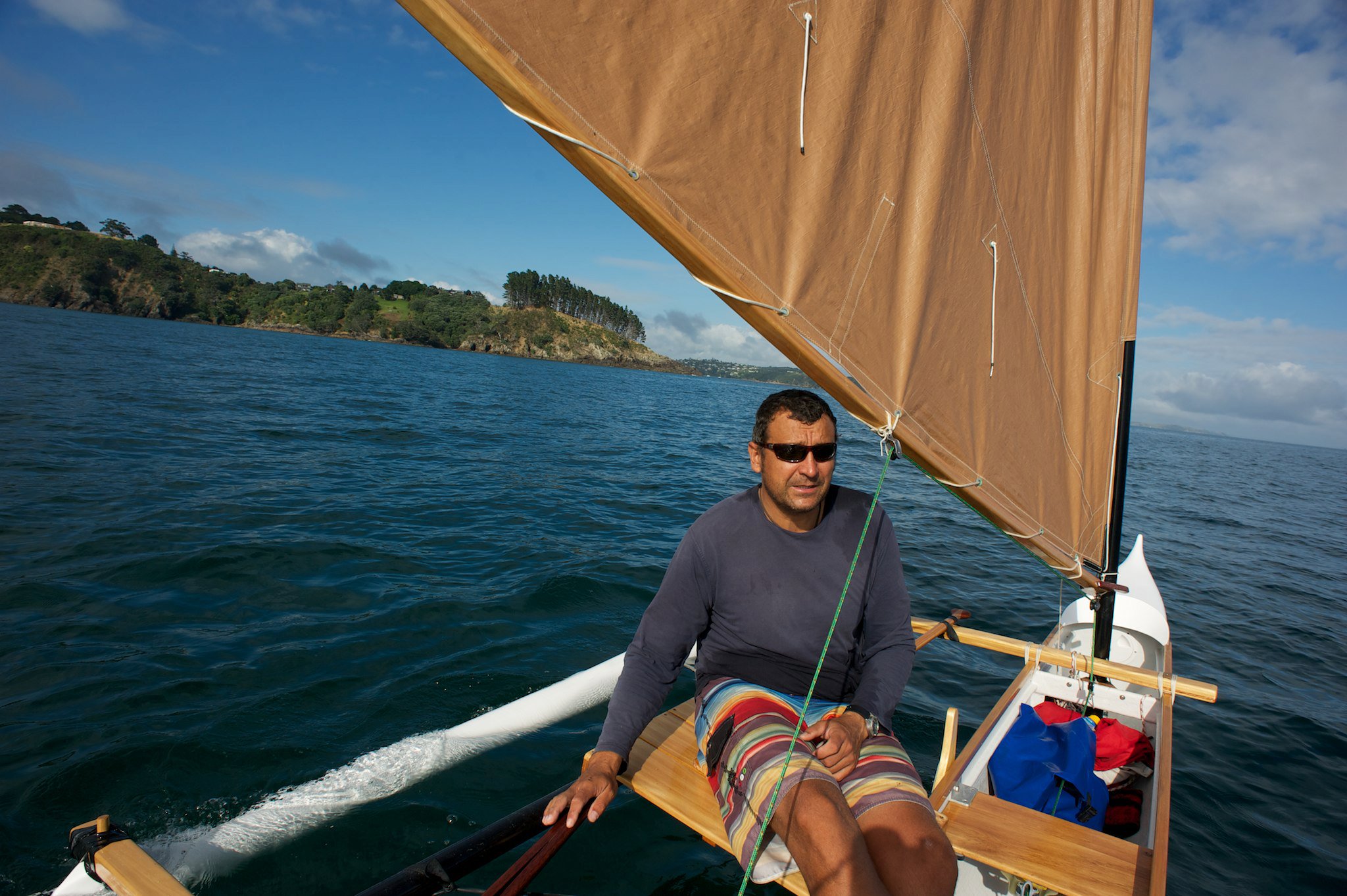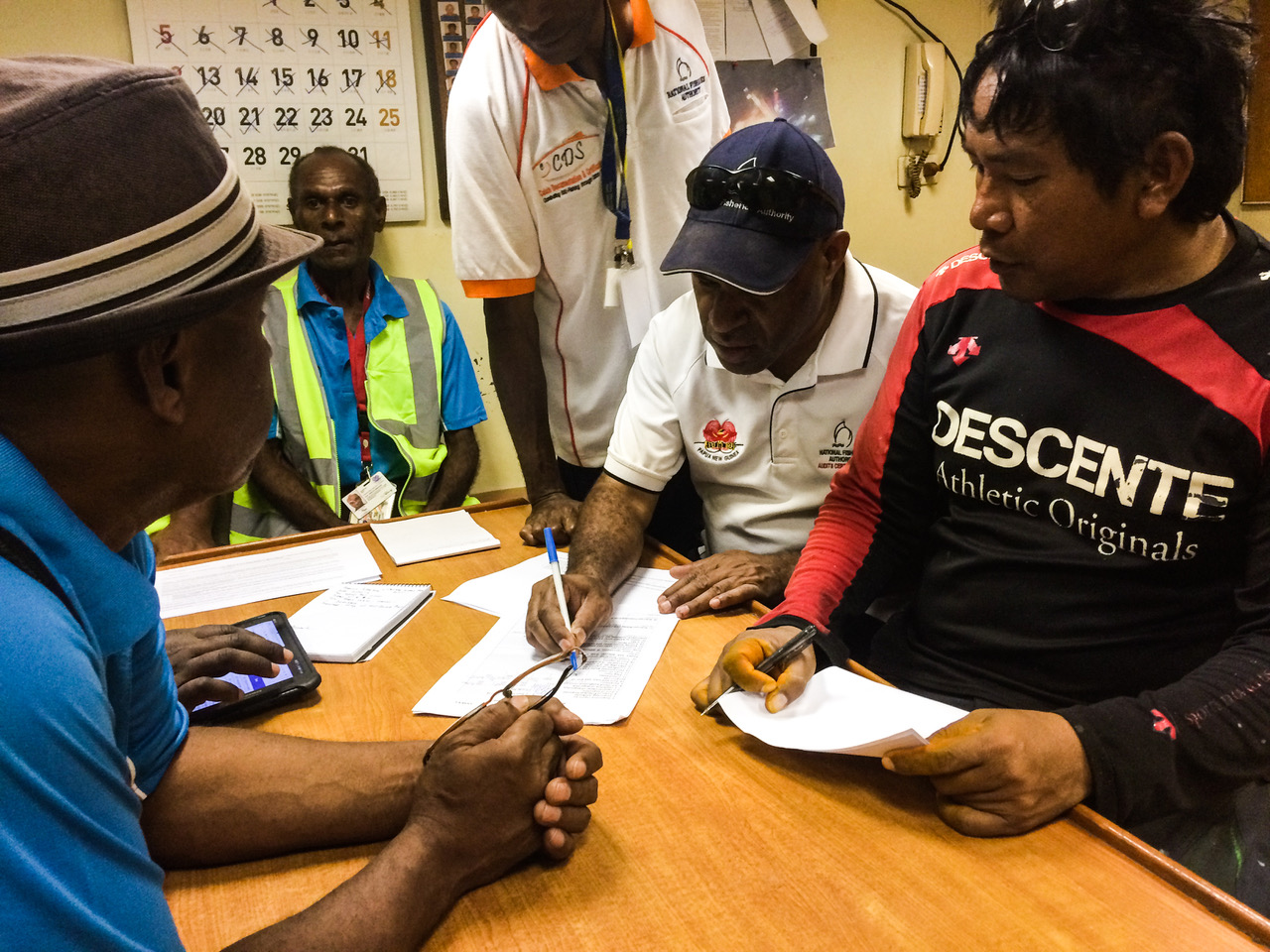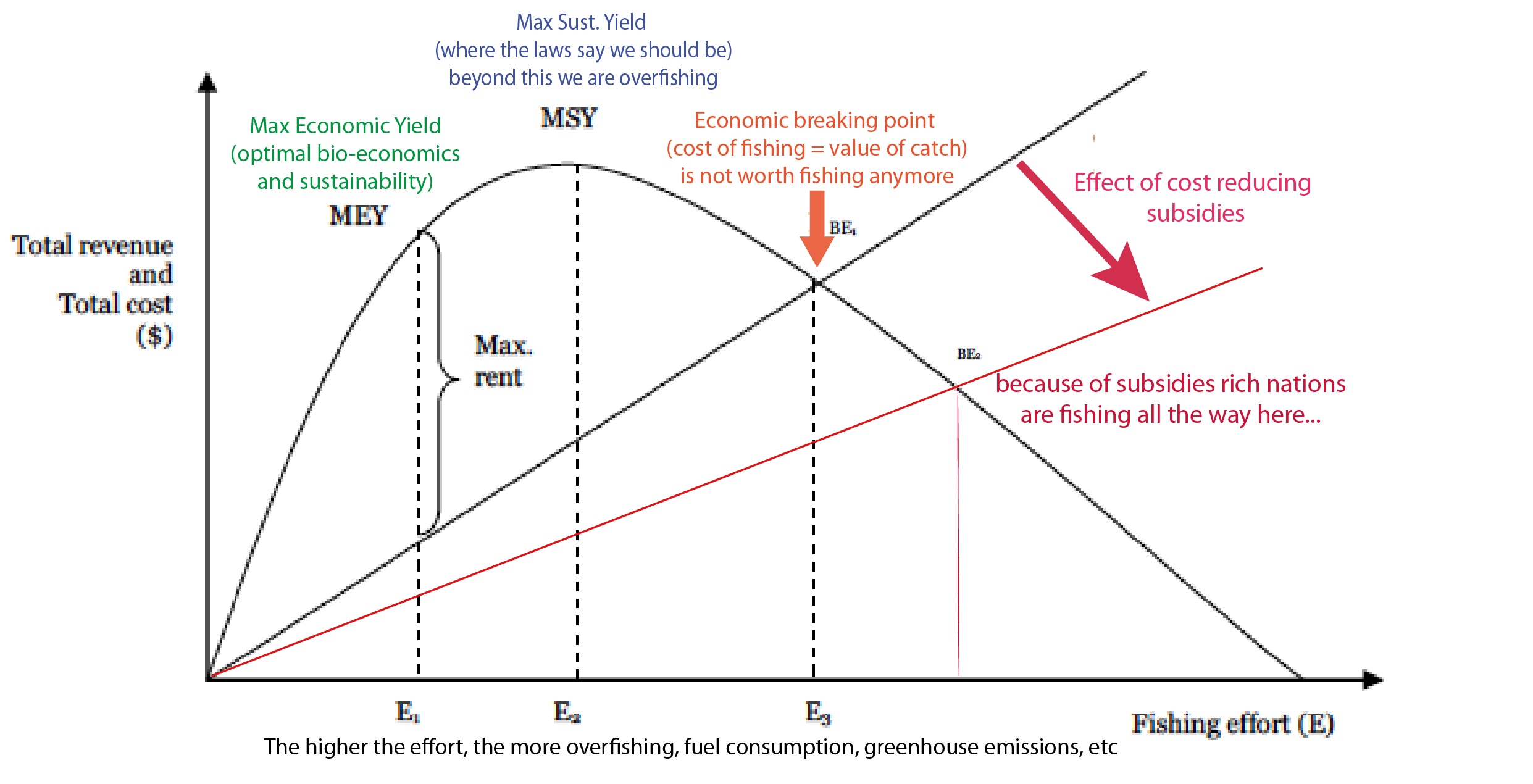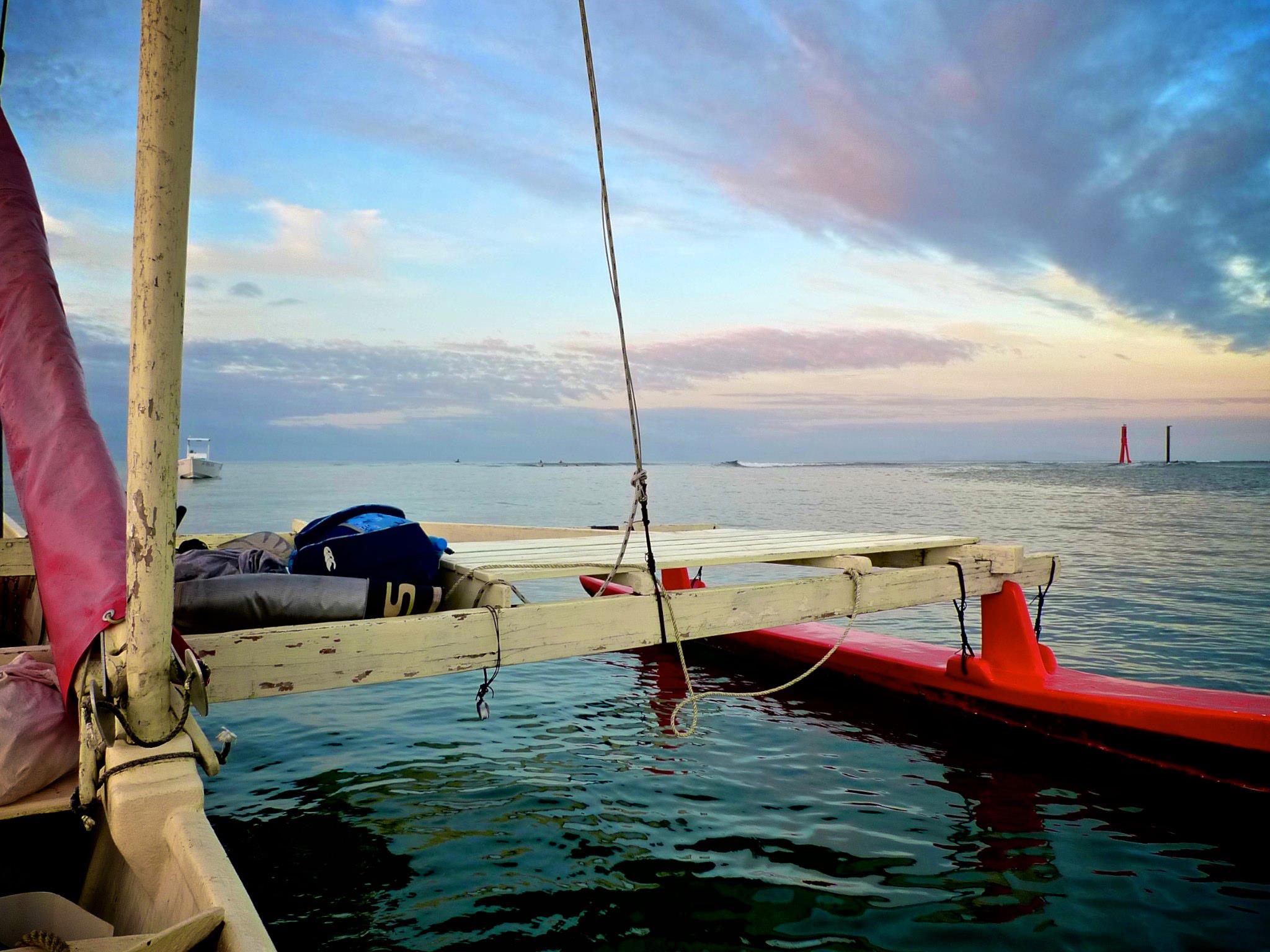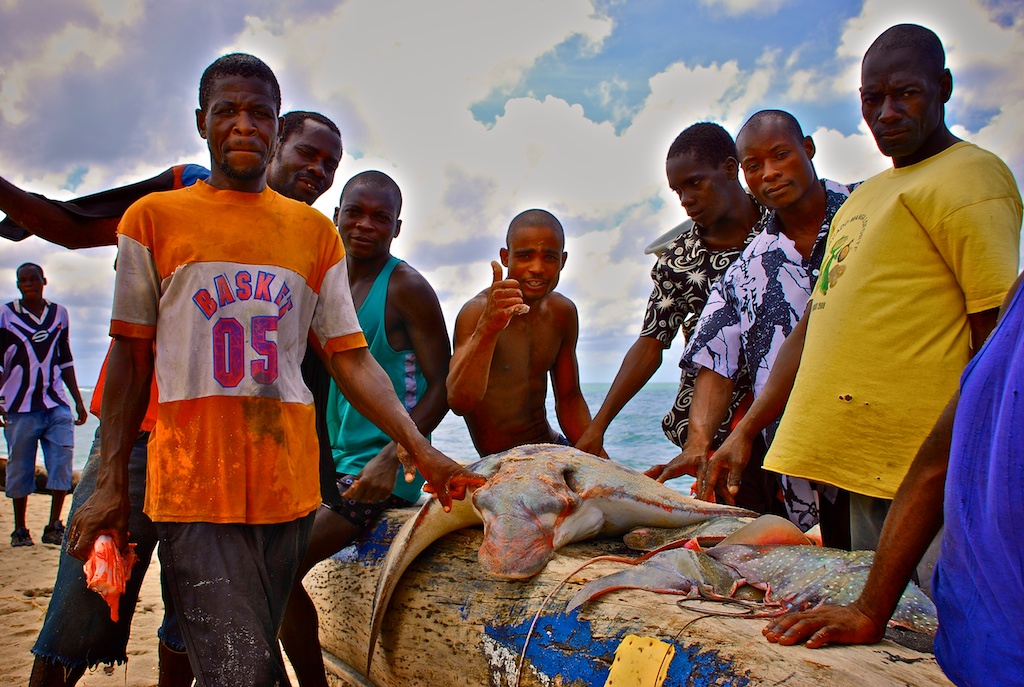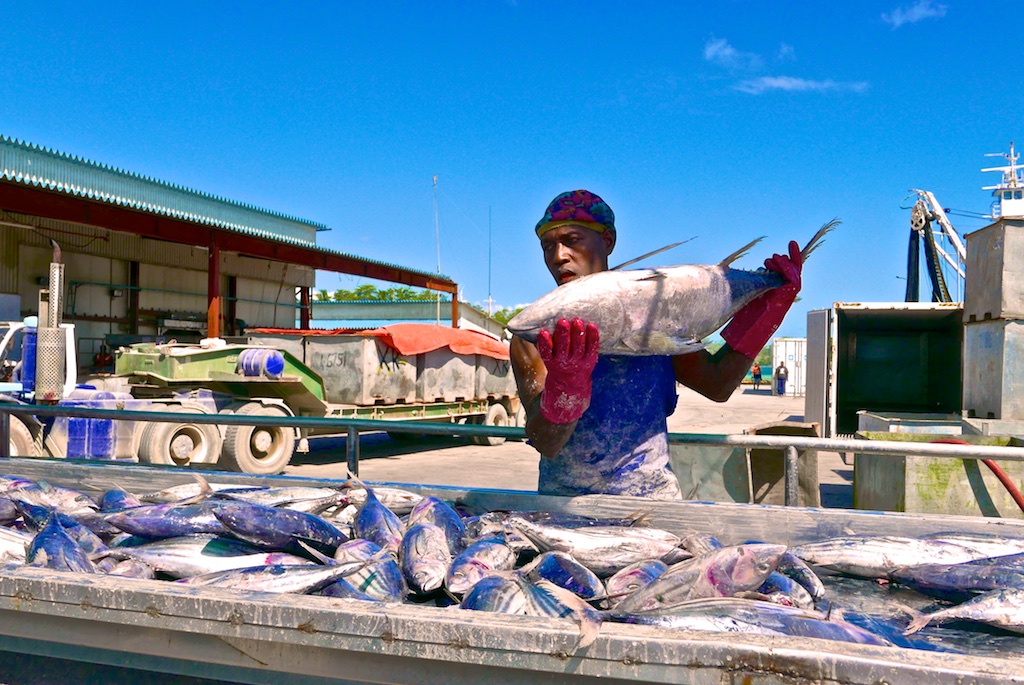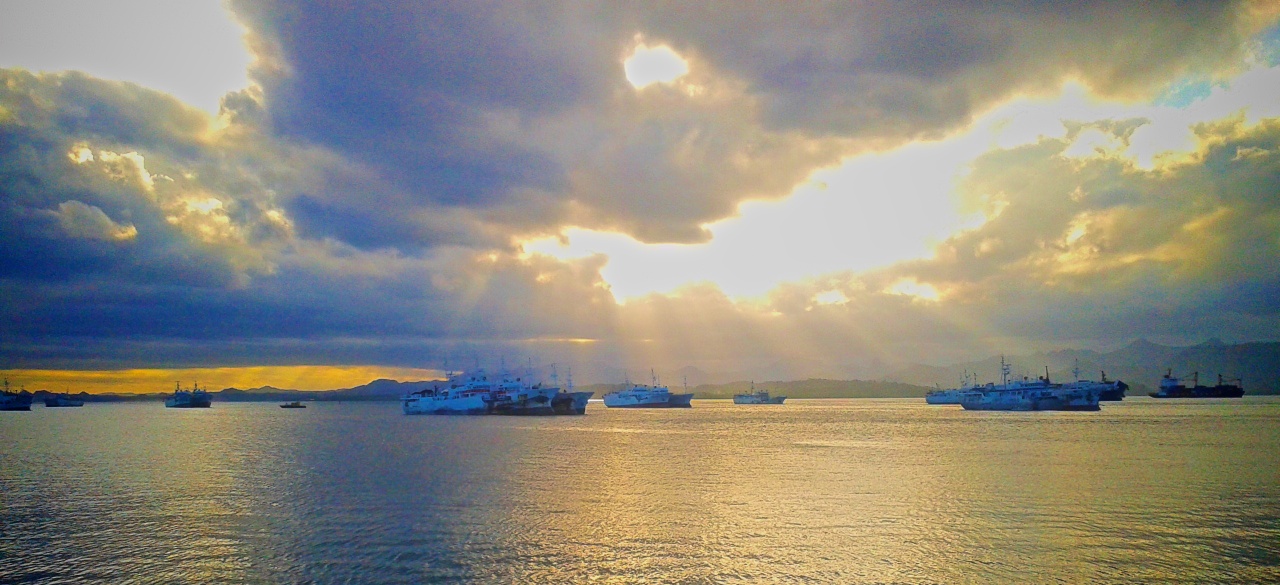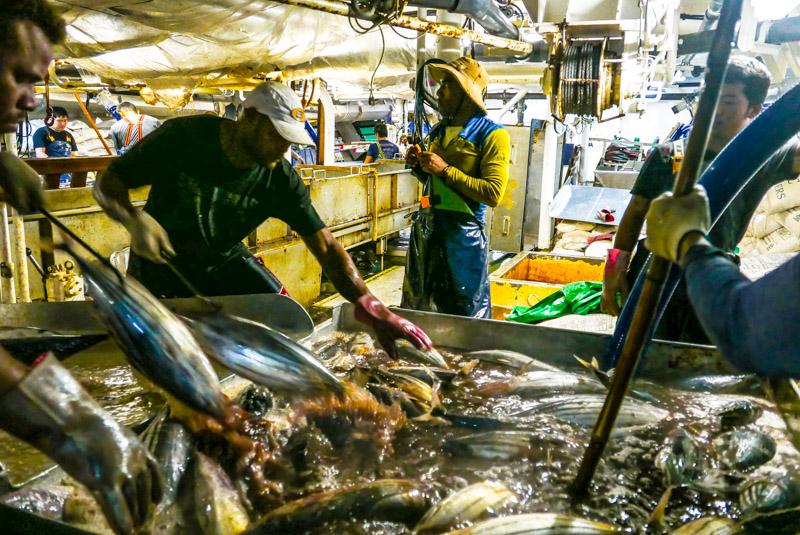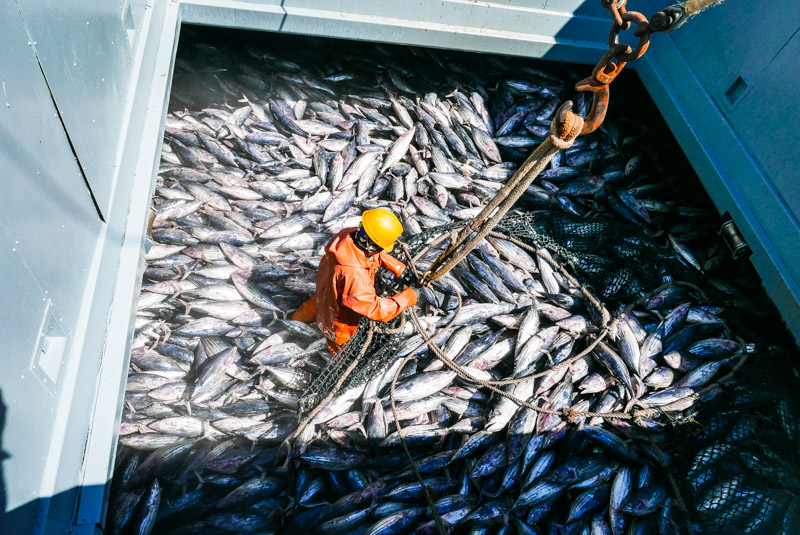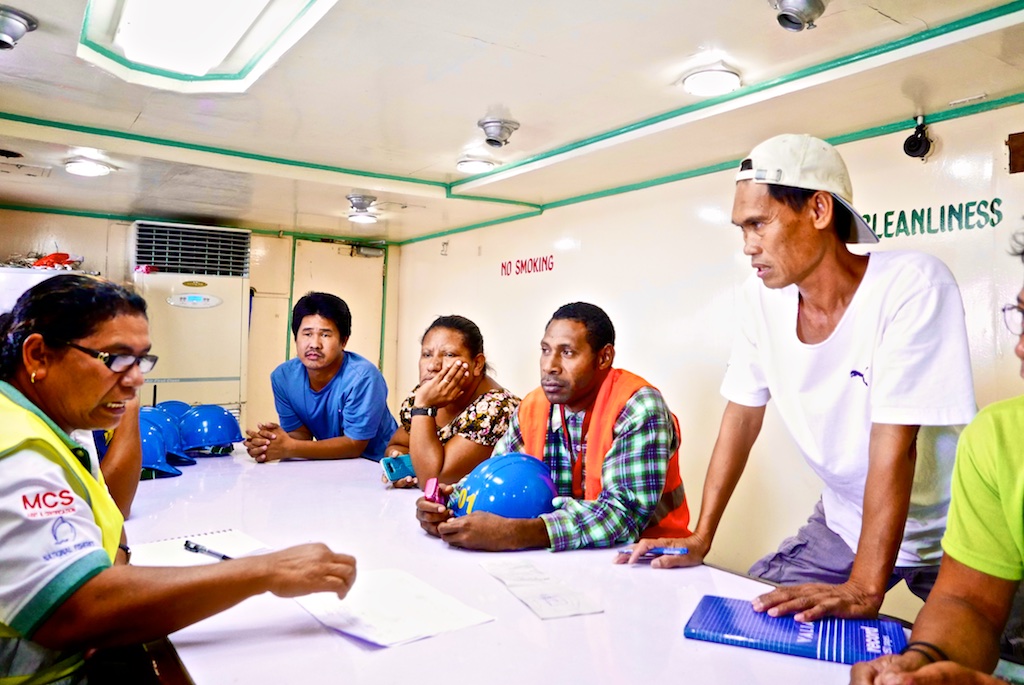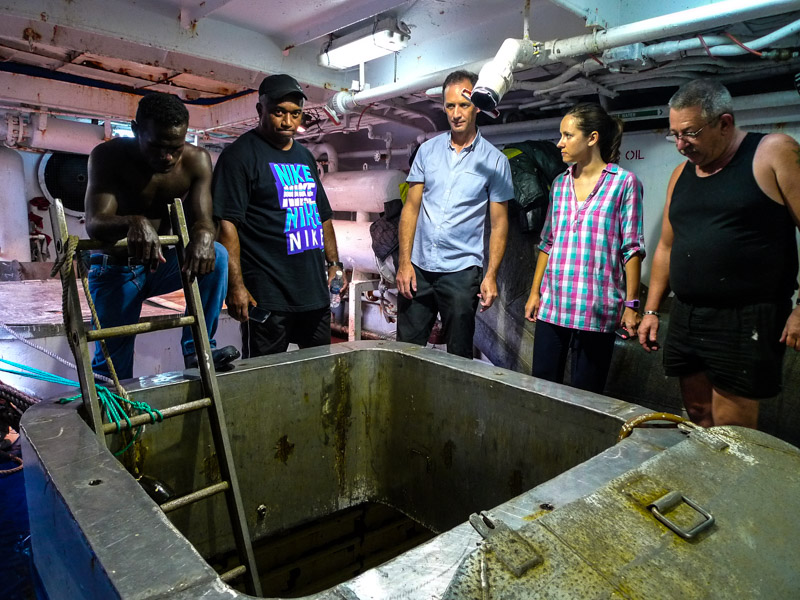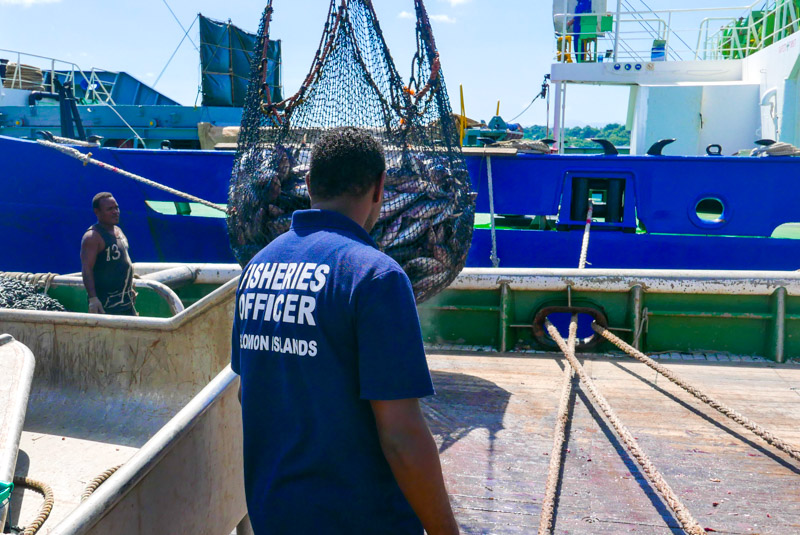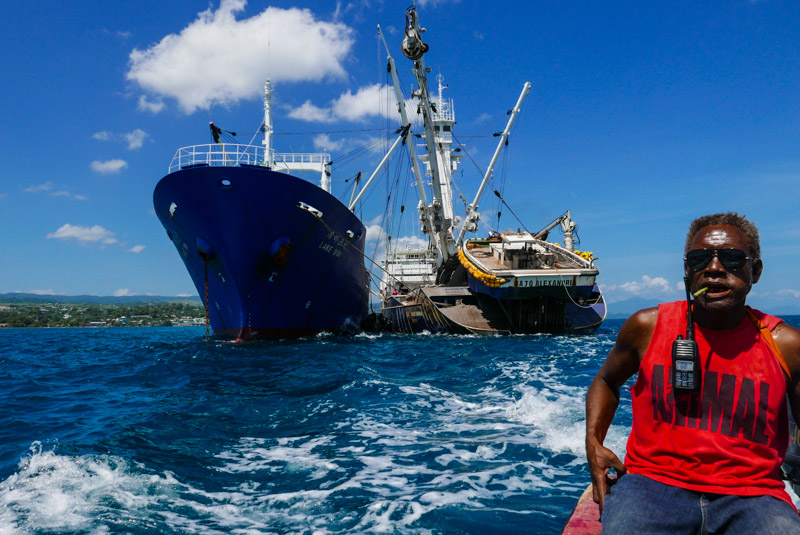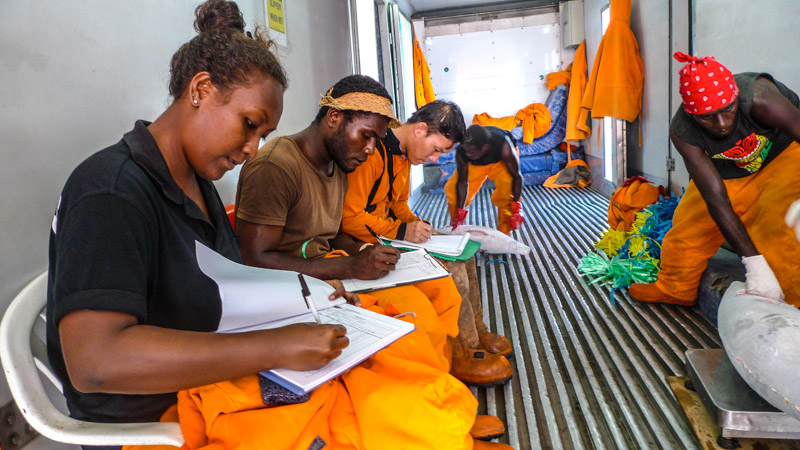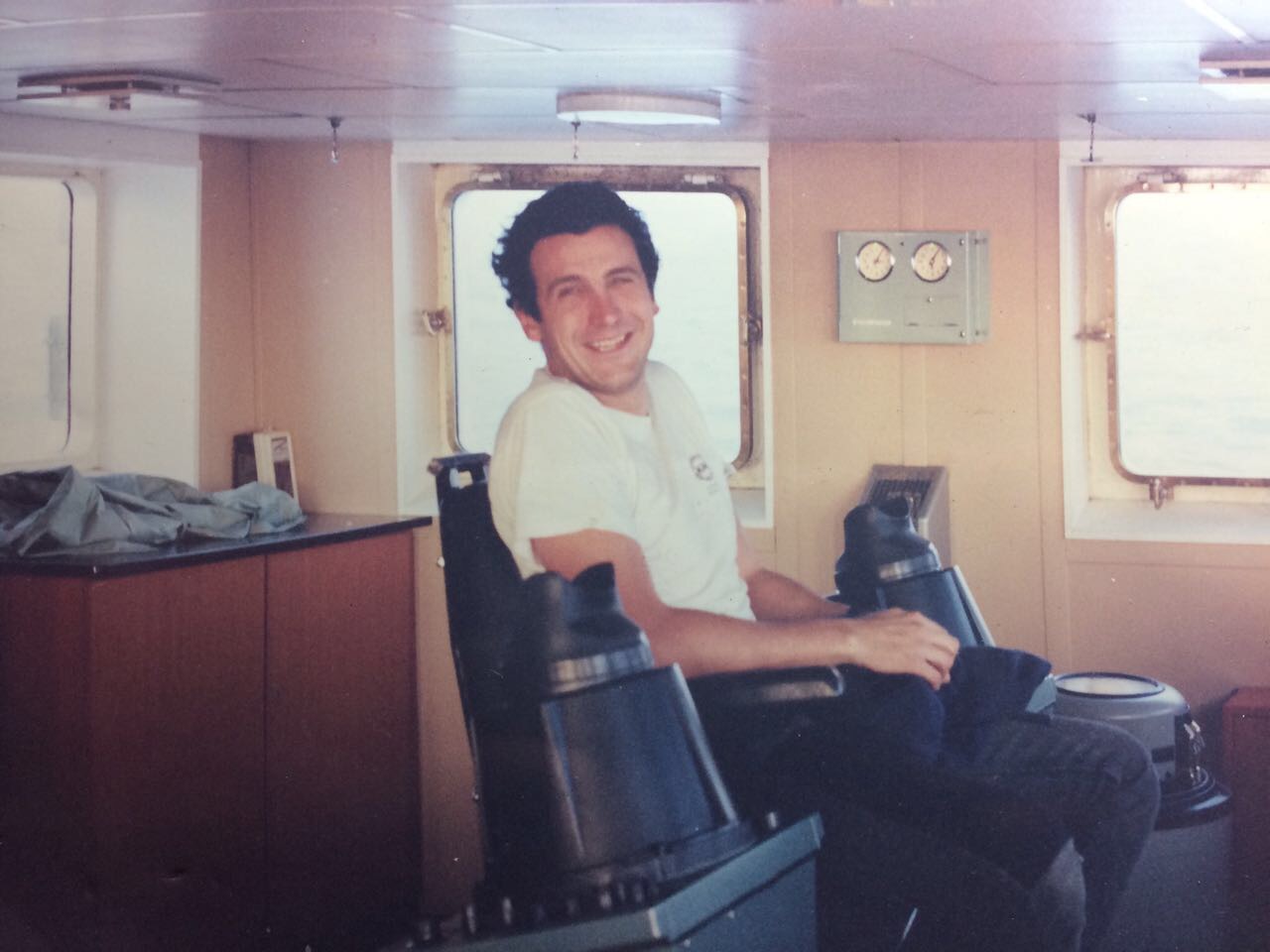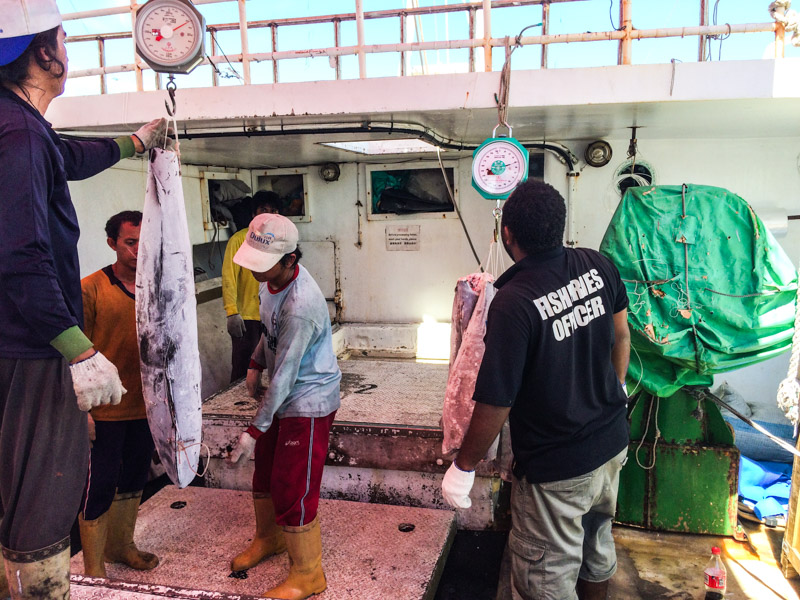And “old friend in the business” wrote the following text for a UCSD sustainability class back in 2010… he really kindly allowed me to reproduce it here… and as said there is a lot to learn from listening to those that witnesses (and sometimes wrote) history.
Background
Tuna fishing and tuna canning is a business that started some 100 years ago in Southern California when there was a temporary slow down in mackerel and sardine canning in San Pedro because of a shortage of raw material. The tuna boats in those days were either trollers (boats that drag hooks) or bait-boats (boats that attract tuna with live bait and catch the tuna with a hook and line). In the 1950’s and 1960’s, the fleet gradually converted to purse seining with the advent of the netting made from nylon and the Puretic power block [1].
The fishermen on the bait-boats would make trips in the Eastern Tropical Pacific from San Diego to Peru depending on the season chasing schools of tuna, primarily yellowfin tuna. As keen observers of the sea and the association of its inhabitants, they readily noticed that the yellowfin tuna would be associated with and follow schools of porpoise – primarily pantropical spotter porpoise – Stenella attenuata.
There is no definitive explanation for the association, but it is thought that the tuna follow the porpoise, including when the porpoise are herded with speedboats.
The tuna fishermen had long known that porpoises are indicators of the presence of tuna.
As the purse seine fishery developed the fishermen started herding the porpoise into a circle so they could be captured in the nets, along with the tuna. All of the porpoises were killed, and the tuna were kept [2].
Quickly the fishermen developed a technique called backing down in which they pulled the net backward, forming a long loop, and force of the backing down took the corks below the water so that the porpoise on the surface of the ocean would be released. Even with this technique, many porpoises were killed in each set.
I worked for the Porpoise Rescue Foundation at the time in the mid-1970’s and spent my time working with the fishermen, installing and testing various net configurations and mesh dimensions in order to reduce the porpoise mortality. One of the best and most well-known innovations was the Fine Mesh Median Panel. This was a panel of netting at the apex of the backdown channel constructed of very fine mesh. The fine mesh prevented the rostrums (beaks) of the porpoise from getting entangled in the net mesh [2].
In 1977, I was hired by the Marine Mammal Commission to be the program manager of the Dedicated Vessel Program which was a year-long experiment to reduce porpoise mortality in the ETP. There were 5 trips scheduled and completed for this program each with numerous experiments to reduce porpoise mortality tested.
If zero mortality and injury to porpoise were to be achieved, it would be necessary to develop a method for catching the large tuna normally associated with the porpoise, without actually capturing the porpoise. The research conducted on the DVP provided some baseline information on the tuna [3].
Floating Aggregating Devices (FADs)
Many oceanic species will also group on or associate with floating objects; trees, FADs, floating oil drums, etc. Again, the reason for the association with these floating objects is not known, but it occurs. I have a log (a FAD) in my front yard that we used to capture about 300 tons in many different sets in 1978 on the first trip of the F/V Queen Mary, the vessel that was charted as the dedicated vessel [3].
The key to developing the successful alternative fishing methods is an understanding of the reason or reasons for the apparent affinity of tuna to surface aggregators, e.g. FADs and porpoise. There is a size difference between the school fish or FAD fish and fish caught under porpoise. Most of the fish caught swimming or associating with a floating object are less than 70 cm while most of the fish caught under porpoise are over 90 cm.
There is considerable overlap in the size of tuna by set type. The larger tuna can swim fast enough to stay with the porpoise, while the smaller fish do not have enough speed [3].
Why the tuna are attracted to surface objects, either active or passive is not known. Certainly, the food beneath a FAD cannot support any significant tonnage of tuna, so a FAD may be used as a visual cue. As the tuna get larger, they may learn that porpoise are good locators of food or the tuna and porpoise may just be attracted to the same area at the time that food is present in that localized area. It may be patches of food or some other factors that draw them together, not gregariousness [3].
If an aggregator could be developed, it would have to be more continuously effective than porpoise. The experience of the bait-boats showed that tuna could be attracted away from porpoise for a time, but for only a short time.
In bait-boat fishing (a form of tuna fishing in which fish are attracted by chummed bait and caught by hook, line, and poles), as soon as the boat approached a school of porpoise and tuna, chumming would start and the tuna would respond. The boat would then drift, and the crew would fish.
As the porpoise school moved on, however, the tuna would leave the bait-boat (that was feeding them live bait) and would re-join the porpoise. From this experience, it seems apparent that an effective aggregator more attractive than live bait must be developed to separate tuna from porpoise [3].
One must never forget, though, that the only reason for seining is to catch tuna. If the tuna are available as school fish or near flotsam (FAD fish), they will be caught there. If the tuna are available under porpoise, they will be caught there, unless, of course, there are more effective methods or regulations that prohibit chasing or setting on porpoise.
One also must remember that this is not just a U.S. problem; thus, if the U.S. fleet is prohibited from fishing on porpoise and the foreign fleet continues to seine with porpoise, the problem of porpoise mortality continues. If alternative fishing methods are developed, they must include mechanisms for attracting the large yellowfin tuna away from the porpoise or aggregating the large yellowfin not associated with porpoise [3].
In the early 1980’s, the San Diego fishermen either sold their vessels or transferred their fishing effort to the Western Tropical Pacific where the skipjack and yellowfin do NOT associate with porpoise. The fishing effort there is focused on free swimming schools of fish or FAD fish. The fishermen would tag the FADs with a radio beacon so they could find it when they needed it [2].
There is an interesting report by Armstrong and Oliver [5] describing the construction and use of FADs in the Eastern Tropical Pacific between 1990 and 1994. One of the purposes of that study was to develop better methods of building and tracking FADs so the fishing could be diverted from the porpoise to another attractor.
The normal practice for FAD fishing would be to tie up to the FAD in the evening, and then wake up at 4 am, look at the sonar to determine if there was enough fish to make a set. If enough fish, then leave the FAD slowly so the fish stayed with the FAD, and make a set around the FAD. When the FAD and fish are secure within the net, the FAD is slowly removed over the corks and is released again with a radio beacon.
When I managed a tuna fleet in the Western Pacific in the mid-1980’s, our skippers would routinely have 10 to 20 beepers (radio beacons) deployed, 1 per FAD. These beepers had real value, either as a radio beacon itself or as a game of keep-away from a competitive country’s fleet.
The latest technology is to use radio beacons that are solar powered and lie just at the surface of the ocean so the only way you can see them is to be almost on top of them, so the theft is minimized. The fishermen can ping or email the beeper nowadays to turn it on so they can home in on it.
The FAD (any floating object) may need to age, and my skippers have told me that they might plant FADs after the vessel was full and they were headed for port. The FADs had beacons so they could be relocated when the trip restarted. It is my understanding that now some tuna boats have literally hundreds of these FADs out at any one time.
In the early 1990’s the major US canneries declared a moratorium on purchasing tuna caught in association with porpoise, and so, for the last 20 years, all the major brands of tuna being sold in the US are sold as “dolphin-free.” This forced the fishermen to develop some different strategies to catch “legal” tuna. By that time most of the US fleet was operating in the Western Pacific, so there was no real impact to the boats catching ability.
About this same time the European consumers demanded “dolphin-free” tuna as well.
Many of the boats that had fished in San Diego were sold to either Venezuelan or Ecuadorean interests. They could not fish porpoise (dolphins) and had to resort to other strategies. Apparently, in the early 1990’s, some of the Spanish-flag vessels fishing out of Ecuador started to fish much further west and planting FADs. This is very evident from the Inter-American Tropical Tuna Commission (IATTC) maps.
There was a substantial increase in bigeye catches associated with these FADs. The small bigeye could be substituted for yellowfin in various canned tuna packs. The average landing of bigeye in the Eastern Tropical Pacific (ETP) for the years 1988 thru 1993 was about 4,100 tons, while the average landing from 1994 thru 1998 was 41,000 tons, essentially a 10 fold increase.
A comparison of a map the catches of bigeye in 1991 versus 1996 dramatically show the difference in catches and the comparison of the effort maps between 1991 and 1996 shown the difference on floating object sets (FADs) [ Appendix – charts 1 & 2] from [4].
RFMO’s
The tuna stocks throughout the world are managed by Regional Fishery Management Organizations (RFMO’s). One of the best known of these is the Inter-American Tropical Tuna Commission located here in La Jolla. (My first job out of college was with the Tuna Commission).
The RFMO’s scientists have noticed this increase in catches of small bigeye and have been suggesting conservation measures since the mid-90’s. The fish caught under porpoise is generally much larger then the fish caught near FADs. The FADs attract younger fish, thus scientists started worrying about the bigeye stocks. In 1999 the IATTC passed a resolution to limit the catch of bigeye taken in the ETP to 40,000 mt and when that limit is reached, purse seine sets on FADs are prohibited [6, pg 433].
ISSF
The International Seafood Sustainability Foundation (ISSF) is a global partnership among leaders in science, the tuna industry and NGOs. Their mission is to undertake science-based initiatives for the long-term conservation and sustainable use of tuna stocks, reduction of by-catch and promotion of ecosystem health [7].
One of the ISSF’s stated objectives is to reduce by-catch of non-target species around the FADs and to reduce the capture of the small bigeye.
Conclusion
The FADs need to be in an area of high-productivity in the ocean because that is where the tuna are going to congregate. When the current set of FADs are deployed they are certainly effective because they are in the proper area. The ones that were deployed on the 1978 DVP were obviously in the wrong ocean area.
I act as the senior sustainability person for big tuna canner and will be advising the teams trying to mitigate the by-catch and small bigeye issues. These are very large scale global problems that are multi-species, multi-cultural, and multinational.
This is not a short term problem.
The title of this paper is “Be careful what you ask for, you just may get it.” More then 30 years ago the tuna industry started testing FADs to reduce porpoise mortality, and the National Marine Fisheries Service scientists continued to try to improve the concept into the 1990’s.
By the end of the 1990’s the IATTC scientists were recommending closures on FAD fishing because of the catch of small bigeye, and now the ISSF is funding a multi-million dollar initiative to find ways to mitigate the by-catch and reduce the small bigeye mortality.
The world continues to turn.
*Obviously the title is inspired in Hemingway's amazing book "The old man and the sea"
[1] - 1977- Michael K. Orbach – “Hunters, Seamen and Entrepreneurs”, University of California Press
[2] – Personal Experience
[3] - 1980 – John DeBeer, “Cooperative Dedicated Vessel Final Report”, Marine Mammal Commission
[4] – 1999- George M. Watters, “Data Report 10”, Inter-American Tropical Tuna Commission
[5] – 1996 – Armstrong & Oliver, “RECENT USE OF FISH AGGREGATING DEVICES IN THE EASTERN TROPICAL PACIFIC TUNA PURSE-SEINE FISHERY: 1990-1994”, Admin Report – LJ-95-14
[6] – 2001 – Block & Stevens (ed) – “Tuna, Physiology, Ecology, and Evolution”
[7] –http://www.iss-foundation.org/home








